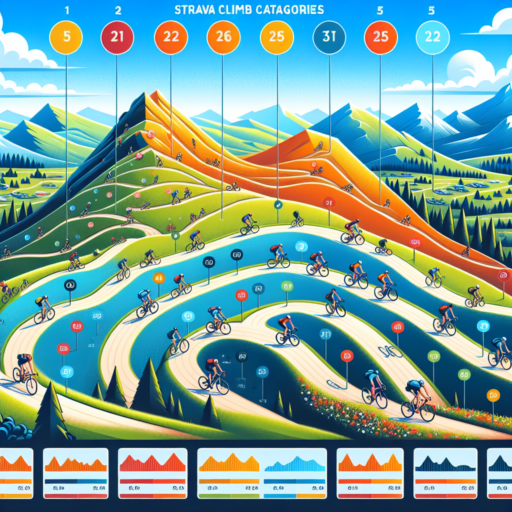No se han encontrado productos.
What do climb categories mean on Strava?
Understanding climb categories on Strava offers an in-depth look into how cyclists and runners can segment and assess their climbing efforts. These categories are crucial for athletes aiming to gauge their performance, set personal benchmarks, and understand how their efforts stack up against others in the Strava community.
Strava categorizes climbs from Category 4 (the easiest) to Hors Catégorie (HC), which stands for beyond categorization and represents the most challenging climbs. This system, borrowed from professional cycling, helps users to quickly identify the difficulty of a segment. The classification is based on a combination of the climb’s length and its average gradient, with HC climbs being the longest and steepest.
For users seeking to conquer varied terrains, knowing the specifics of each category can serve as a motivational tool. As riders or runners venture into steeper and longer climbs, they are awarded more significant accomplishments on the app. This categorization not only fuels personal achievement but also fosters a sense of community as users compare and compete over similar challenges.
What is a category 4 climb?
In the world of professional cycling, climbs are categorized based on their difficulty, from the relatively easy Category 4 to the most challenging Hors Catégorie. A Category 4 climb is considered one of the easier ascents, typically featuring in various stage races and one-day events. Despite being the least steep and shortest among categorized climbs, it still poses a significant challenge, especially to amateur cyclists.
The key factors that determine the category of a climb include its length, gradient, and position within the race. For a climb to be classified as Category 4, it usually spans a distance of 1 to 2 kilometers with an average gradient of up to 5%. These climbs often serve as springboards for breakaways or as a test for riders’ climbing abilities early in a race. Though they may not be decisive for the race outcome, they add strategic depth and challenge to the course.
Within professional cycling, being the first to reach the summit of a categorized climb can earn riders points towards a race’s King of the Mountains competition. Even on a Category 4 climb, these points can be crucial, especially in closely contested competitions. As such, these climbs are far from inconsequential and can play a notable role in the dynamics of a race, offering opportunities for riders to showcase their climbing prowess and fight for the prestigious polka dot jersey in races like the Tour de France.
What is a category 5 hill?
In the diverse world of cycling, hills are not merely obstacles but categories of challenges that riders prepare to conquer. A category 5 hill represents the most accessible grade within the classification system used to rate the difficulty of climbs in professional road cycling. This categorization is pivotal in races such as the Tour de France, where hills and mountains significantly influence the outcome.
The criteria for classifying a hill into this category are not strictly defined but generally revolve around a combination of its length, gradient, and position within the race. Typically, a Category 5 hill is shorter and has a gentler slope compared to its more daunting counterparts. These are often less than 2 kilometers long with an average gradient of up to 5%, providing a test suitable for novices and professionals alike to demonstrate their climbing prowess.
Despite being considered the least challenging in the professional cycling hierarchy, Category 5 climbs hold strategic importance in races. Riders often use these segments to gain points for the King of the Mountains classification or to create breakaways from the peloton. Their approachability makes them perfect platforms for attacks and can significantly impact the race dynamics, showcasing the depth of strategy in professional cycling.
What is hors category climb?
The term hors category climb is a French phrase that translates to «beyond classification». Originating from the world of professional cycling, this definition is applied to climbs that are so steep, long, or difficult that they exceed the standard categorization used to rank the difficulty of a climb. Typically, climbs are graded from Category 4 (the easiest) to Category 1 (the hardest), with hors category climbs surpassing even the rigorous challenges posed by Category 1 inclines.
Hors category climbs are known not only for their physical demands but also for the psychological challenge they present to cyclists. Often featuring in major professional races like the Tour de France, these climbs are a true test of endurance, strength, and willpower. They are characterized by several daunting aspects, including steep gradients that can exceed 10%, lengths that stretch over several kilometers, and high altitudes that challenge even the most seasoned athletes.
The inclusion of hors category climbs in cycling races adds a thrilling element, often proving to be pivotal stages where the race can be won or lost. Spectators and cyclists alike hold these climbs in high esteem, acknowledging the sheer effort required to conquer them. As symbols of ultimate challenge, these climbs are celebrated within the cycling community for the unparalleled tests of cycling prowess they provide.




